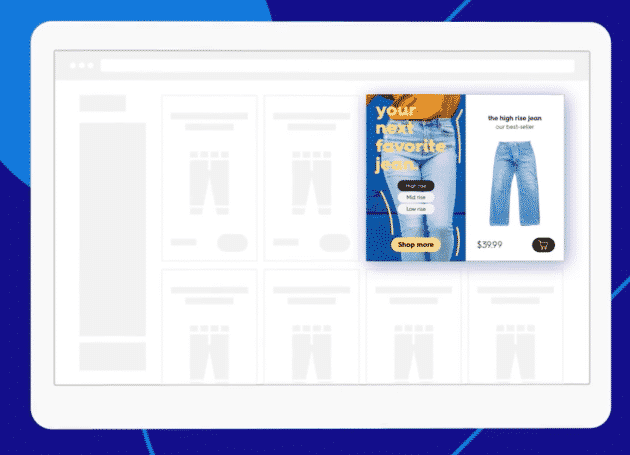Social distancing is changing nearly everything about our lives — and celebrating holidays is no exception. This year, Mother’s Day, Father’s Day, and graduation will look very different. There won’t be brunches or in-person family gatherings, but that means sending gifts will be particularly important. That’s why it’s so surprising to see some retailers not offering discounts and deals traditionally provided for these occasions.
Such Scrooge-like retailer behavior may be due to said retailers experiencing a surge in demand from the pandemic and being unable to keep up with fulfillment. Conversely, other retailers might believe this surge means they don’t need to offer discounts to an already-strong shopper base. As marketers, we enjoy segmentation – for fun and profit – so let’s create two segments of retailers based on their willingness to be a part of Spring Holidays, such as Mother’s Day.
This action sorts retailers into two groups — those stepping up to help struggling consumers with discounts and those who are focused on a full-price buyer. COVID-19 presents a pivotal moment for retailers and brands as they think about how consumers perceive them. For those retailers in the segment who want to provide the most value to shoppers, we offer the following data to help drive your strategy:
According to Criteo’s Global Coronavirus Consumer Behavior Survey of nearly 10,000 consumers, 47% of the world’s consumers are shopping online more during the pandemic than they previously did. Furthermore, as seen in the chart below, they’re starting seasonal searches about 10-14 days earlier. Early shopping helps ensure that preferred gifts are in stock and arrive on time. Brands and retailers that are advertising earlier for key holidays, such as Mother’s Day and Father’s Day, are likely to benefit from this earlier expression of purchase intent.

Shoppers will turn to virtual connections and remote gifting since typical in-person gatherings are no longer possible. How can brands and retailers leverage advertising to show their value during Mother’s and Father’s Day?
1. Inspire consumers with relevant gift ideas.
People have a lot to think about while staying at home, so brands and retailers can make their lives easier with gift inspiration through dynamic ads. This includes retargeting consumers with specific and relevant product recommendations in high-growth categories such as comfortable clothing, outdoor furniture, bath and body gift sets, and at-home sporting goods.
2. Convert your in-store shopper to an online shopper.
Even though physical stores are closed, omnichannel retailers can still appeal to their loyal in-store shoppers. Connecting in-store transaction data to online advertising campaigns allows retailers to reach in-person store patrons digitally and share customized offers for gifts. Advertisers can also create buyer personas for new audiences using consumer intent data. For instance, parents who are shopping for baby products may also be more likely to be searching for webcams. After all, Mom and Dad want to stay visually connected to their grandkids.
3. Reach consumers when they’re in a shopping mindset.
With consumers shopping more online, brands can put themselves center-stage with native ads on retailers’ sites through retail media. Doing so shows sponsored ads to consumers while they’re in a shopping mindset and very close to the point of actual purchase. Retail media lets advertisers access prime inventory on and off retailers’ sites with shopper-friendly experiences to maintain visibility and drive purchases.
4. Create positive in-app experiences to build loyalty.
According to our April 2020 Global App Survey, three of every five app users are likely to make an in-app purchase in an app they downloaded during the pandemic. App marketers can re-engage these users with relevant offers for top products or potential gifts. This helps create loyalty in what may have started as a short-term relationship by providing value to users beyond the point of install. App marketers should also consider special loyalty bonuses (points, discounts, free features) targeted at the highest-value users, ensuring those users remain active long after COVID-19 is just another license plate people can’t decode.
With some degree of social distancing orders likely in place indefinitely, shoppers will continue flocking to retail and brand websites to fulfill their immediate shopping and gifting needs. This new world gives brands and retailers the chance to be there for their customers through ecommerce during spring holidays and beyond. And at a time when unemployment is at an all-time high, providing discounts and offers on things they need and want will encourage loyalty in a post-pandemic world.
There’s a quote attributed to J.P. Morgan that says, “In bear markets, stocks return to their rightful owners.” I think Morgan would agree that in a recession market share also returns to its “rightful owner” because market participants show their true colors. Companies that pinch pennies at the expense of their customers erase long-term brand equity, while those who provide value to consumers shine in the short and long term. I encourage brands and retailers to be those long-term players.
For more Coronavirus insights across product categories around the globe, visit our Consumer Insights Dashboard.














